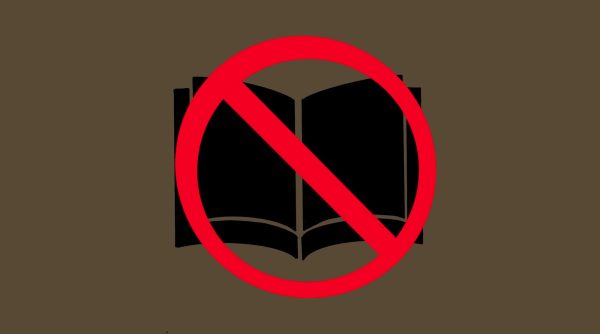Book Review: ‘The Loneliest Americans’
“The Loneliest Americans” by Jay Caspian Kang presents an insightful dissection of the complexity of Asian American experience. Kang writes from a partly autobiographical and partly historical perspective on the Asian American identity as it is today, cynically offering himself up as the main protagonist of this greater narrative — one staked in the belief that the term “Asian American” paints a misleading picture by characterizing a wide range of experiences under one umbrella.
In crafting this narrative, he engages in a thoughtful conversation with a wide range of topics relevant to what he describes as the loneliest group of Americans: Affirmative action, the concentration of Asians in specialized magnet schools, different levels of violence, toxic Asian masculinity and America’s Black-white binary obfuscating the Asian perspective. And although his writing and analysis sometimes leads him to go on rambling tangents in which he doesn’t fully defend his judgements, he still manages to carve out a complicated but convincing message: The Asian American experience is not monolithic, but elite Asian Americans have monopolized the narrative.
Educated Chinese immigrants who entered the United States via H1-B visas lived a very different life compared to Vietnamese refugees who resettled here following the Vietnam War. The Indian son or daughter of working class parents in Edison, N.J. will face a very different set of challenges than the fastest growing demographic at prestigious private schools such as Philips Academy Exeter or Dalton: Mixed race Asian kids. The Filipino kids growing up in the inner cities of Los Angeles move through a world vastly different from those residing within the gated communities of Westchester. This is a simple truth, yet our politics, media and popular culture continue to brush over these experiences with one broad stroke — the Asian American label.
Kang understands how ludicrous it is for such a wide range of ethnicities and lived experiences to fall under a singular category of people. But he takes his analysis a step further by taking aim at the inequality within that umbrella. For the fastest growing demographic in America, which also happens to be the most unequal when it comes to wealth and income, he submits an indictment against those who are currently leading the prevailing media and political discourse regarding Asian America: The children of those who arrived due to the Hart-Celler Immigration Act of 1965.
To Kang, he feels that Hart Celler represented a paradigm shift in the Asian American story. With decades old immigration restrictions being fully rescinded by its passage, tens of millions poured into the United States from all corners of Asia with no memory or understanding of past racial discrimination against Asian Americans. As a result, the hopes of building a unified Pan-Asian identity around collective struggle died. And in its place arose a color-blind meritocratic mindset that prioritized economic advancement and self-development over everything else. Or at least, that was the case until the Hart Celler immigrants started having kids.
The major difference between the Hart Celler immigrants and their children is that the immigrants did not care about cultural assimilation. Most immigrants were perfectly content with developing and living in their own communities, finding a sense of pride in their economic self-determination alone. By the time the children started going to school, it became apparent that they wanted something more; they wanted a sense of identity that could explain their place in American society. And they found it by leaning into the elite white liberal culture that dominated the upper echelons of society. The cleavage between these immigrants and their children is the most important point that Kang makes, one which I found particularly striking as a child of the Hart Celler immigrants myself.
In order to fit in, many of these children devoted themselves to a meritocratic and color-blind notion of success. This standard demanded that they work hard, ignore racial discomfort and pursue acceptance within the elite institutions of America. Consequently, pursuit of acceptance meant selling out elite white liberals socially and politically — a tradeoff that many Hart Celler children make today. Proximity to whiteness and elitism, whether it be through something as innocuous as wearing Vineyard Vines or as pernicious as obsessing over the meritocratic rat race, became the guiding northstar for the Hart Celler kids. Kang puts it best himself by noting that “The identity politic of the modern, assimilated Asian American is focused on getting a seat at the wealthy white liberal table.”
It is these Asian Americans that have won seats at the table who are unfairly dominating the national discourse around the greater Asian American community, Kang argues. The news cycle does not care about the epidemic of violence devastating the working class Asian Americans in our major cities. Our political class did not pay any attention to the small Asian businesses destroyed by the lockdowns. Hollywood loves to depict Asians as crazy and rich, but they would never make a blockbuster about the impoverished Hmong community in Minnesota. This is all because those Asian Americans, working class ones, do not have seats at the table. And those who do have seats at the table would not dare to challenge the wealthy, white and liberal orthodoxy that they adopted to gain entry.
Andrew Yang is an example of someone with a seat at the table but no interest in changing it. Graduating from Philips Academy Exeter, and then later attending Brown University and Columbia Law School, he promoted his own presidential campaign by trafficking Asian stereotypes. He sold hats emblazoned with just the word MATH, perpetuating and profiting off of the trope that Asian Americans are good at mathematics. And then during the debates he made harmful jokes, saying how “I am Asian so I know a lot of doctors,” during the third presidential debate. The white liberals in the audience, predictably, approved of the self-deprecation by laughing and clapping.
It is people at the table like Andrew Yang who are responsible for the lopsided representation of the Asian American community. Kang offers no hard and fast prescriptions for fixing this issue of unfair and unequal representation, but implicit throughout his work is the sense that this status quo is untenable. Our challenge lies in rejecting the status quo, even if that means flipping the table over completely.











